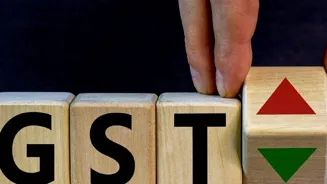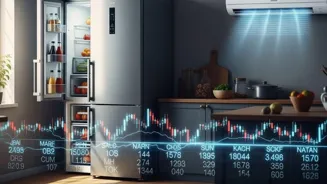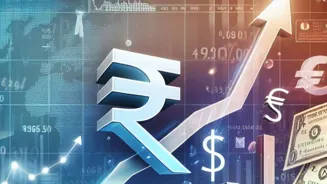Finance Minister Nirmala Sitharaman will on Wednesday, August 20, attend a crucial meeting of a group of ministers on GST rate rationalisation, where the Centre is expected to push its proposal for sweeping
reforms aimed at lowering tax rates and bringing down prices of common-use items, according to a PTI report citing sources.
The two-day meeting of the Group of Ministers (GoM) on GST rate rationalisation is scheduled for August 20-21. Apart from the rate rationalisation panel, members from the GoMs on compensation cess and on health and life insurance are also expected to participate.
“The idea is to put forth the Centre’s viewpoint behind the GST reform proposal. Although the Centre is not a member of the GoM, the Union finance minister’s presence and her address will give the GoM a better understanding of the idea and thought process behind the proposal,” a source told PTI.
The Centre has suggested reducing the existing four-slab GST structure of 5, 12, 18 and 28 per cent to a two-tier system of 5 and 18 per cent, with a 40 per cent special rate for select items. The higher 40 per cent slab is proposed only for 5-7 demerit goods such as pan masala, tobacco and online gaming, according to the report.
Under the plan, nearly 99 per cent of goods in the current 12 per cent slab would move to the 5 per cent category, while 90 per cent of items and services currently taxed at 28 per cent would shift to the 18 per cent bracket. The Centre has argued that the new structure will ease the tax burden for the middle class, MSMEs, and the farm sector.
The proposal comes at a time when the levy period of GST compensation cess is nearing its end and concerns remain over duty inversion in several sectors. At the same time, a GoM is also working on tweaking rates for health and life insurance premiums to provide relief to consumers.
Bihar Deputy Chief Minister Samrat Choudhary heads the GoM on rate rationalisation as well as health and life insurance, while Minister of State for Finance Pankaj Chaudhary convenes the panel on compensation cess.
If the GoM endorses the Centre’s proposal, it will be placed before the GST Council — chaired by Sitharaman and comprising finance ministers from all states and Union Territories — in its meeting likely next month.
Prime Minister Narendra Modi, in his Independence Day address, had promised a “Diwali gift” for citizens through GST reforms that would lower tax rates. The finance ministry later unveiled what it called the “next generation” of GST reforms, built on three pillars — structural changes, rate rationalisation and ease of compliance.
‘GST 2.0 To Lower Effective Tax Rate, Boost Fiscal Revenue’
The proposed two-tier Goods and Services Tax (GST) structure could lower the effective tax rate while boosting fiscal revenues over the long term, said YeeFarn Phua, director at S&P Global Ratings.
He said the present multi-slab GST regime is complex, making accounting and implementation cumbersome. A streamlined two-rate system, he said, could ease compliance and reduce disputes.
Meanwhile, SBI Research in its latest report said the proposed GST reforms through a two-tier tax structure and lower tax rates on household goods will lead to an estimated average revenue loss of Rs 85,000 crore a year, but will boost consumption by Rs 1.98 lakh crore.
The Centre has proposed a ‘next-gen GST’ under which the Goods and Services Tax (GST) will be a two-rate structure of 5 and 18 per cent based of classification of items as ‘merit’ and ‘standard’. Also, a 40 per cent tax will be levied on 5-7 select goods, including demerit goods like pan masala and tobacco.
SBI Research Report estimated that the effective weighted average GST rate has come down from 14.4 per cent at the time of inception to 11.6 per cent in September 2019. Given the current rationalisation of rates, we believe that effective weighted average GST rate may come down to 9.5 per cent.














